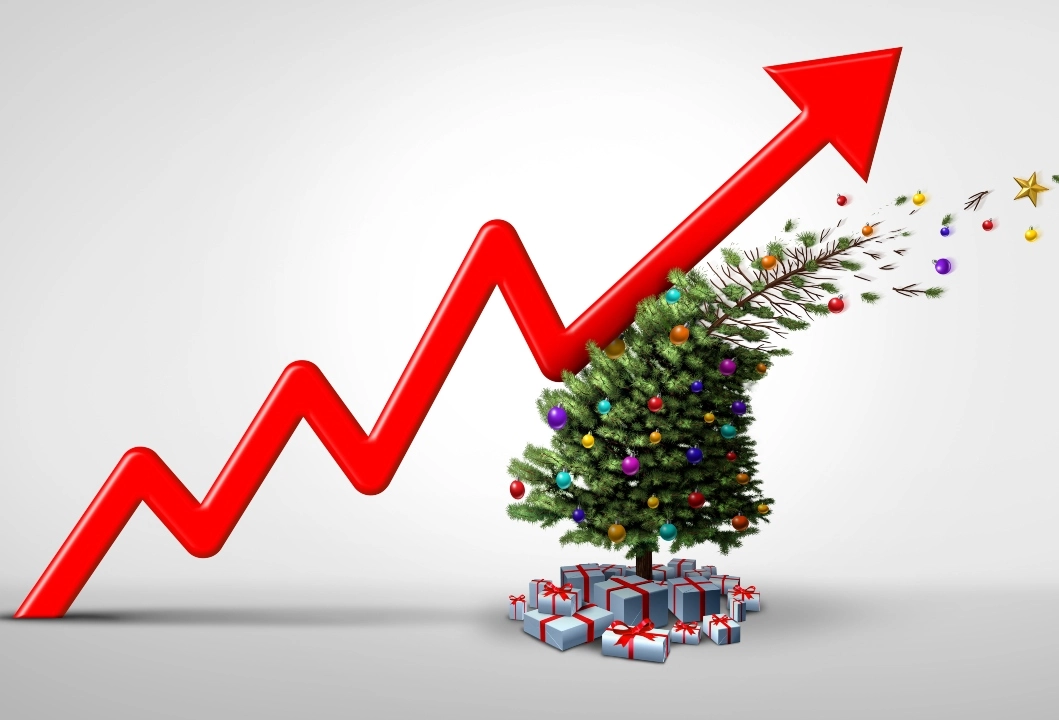
The business story of the holiday season – record-breaking inflation caused by supply-chain pressure – has hit the cannabis industry especially hard.
That’s because competition across the THC spectrum is forcing cannabis entrepreneurs to drop prices on everything from vapes and flower to wholesale cannabinoid isolates, just as they’re paying steep markups for inputs from fertilizer to solvent to plastic packaging.
“This industry is so averse to raising prices. It’s different from other industries,” said Lo Friesen, CEO and chief extractor at Heylo Cannabis in Seattle, which sells wholesale THC extracts to other marijuana companies.
“Prices in the new year are going up everywhere, and that’s not happening in this industry. In fact, I’ve seen a number of companies continue to lower their prices, which is completely wild.
“At least in Washington and other developed states, you can’t do it (raise prices). No one is able to communicate these price increases right now and show the big picture.
“In other industries it’s very normal to raise prices, but not us.”
Different direction
Sales figures back up Friesen’s perception that consumer marijuana and hemp prices aren’t reflecting inflation.
Inflation in the overall economy reached historic highs this week, when the U.S. reported that the November producer price index – a government metric of average changes in selling prices across all industries – rose 9.6% over the previous 12 months.
It was the biggest jump since the index was first calculated by the U.S. Bureau of Labor Statistics in 2010.
But consumers aren’t paying more for cannabis.
According to sales metrics tracked by Chicago-based analytics firm Brightfield Group, which tracks nationwide CBD sales, consumer CBD prices ticked down in 2021 and consumers were more likely to choose CBD product formats with lower price points instead of higher-concentration formats such as tinctures.
“In earnings calls throughout 2021, numerous industry-leading companies have cited that they are still seeing price compression, especially in direct-to-consumer channels,” Brightfield analyst Matt Zehner told MJBizDaily via email.
And in THC dispensaries in several states, prices stagnated or, in some cases, fell.
According to Seattle-based data and analytics company Headset, which tracks marijuana sales in 15 markets in the U.S. and Canada, the average price per unit of THC in marijuana flower – the so-called equivalized price – was 1.5% lower this month than in January 2020.
Equivalized THC prices fell even more for vapes (down 21%) and edibles (down 26%) between January 2020 and December 2021 in those states, Headset reported.
Feeling squeezed
Cannabis operators told MJBizDaily that they simply don’t see how they can raise prices in the ultracompetitive market.
“The prices increased from suppliers around 30%” in the past year, said Dominick Volpini, vice president of Fremont, California-headquartered Cloudious9, which makes vaporizer hardware and accessories.
“It does shave some profit or margin off of the products, but we’re not going to be passing those costs on to the consumers with our current product portfolio.”
He pointed out that his company sells a $60 cannabis grinder while competitors list marijuana grinders for $20.
“We don’t feel like it would be in our best interest to raise the price right now.”
Volpini said his company will simply hope to recoup costs through higher prices in the future.
“For new products that we release in the future, we’re going to take the pricing into account,” he said, “and that is going to basically change how we’re going to price new products moving forward in the future.”
Explaining prices
For South Carolina delta -8 THC manufacturer Hii Stick, investments in extensive consumer education have helped the company avoid dropping prices.
“We’ve been pretty firm in trying to sustain that value,” brand director Ian Bush said.
“At the same time, we’re fighting actively against increasing prices. And I think if prices do go up, we’re going to have to figure out, from a brand perspective, how can we offer value that’s relative to the increase in the price?”
That’s a smart pricing strategy in a young industry with limited consumer knowledge about how cannabis products are made and how much they should cost, said Andrew Livingston, director of economics and research at Denver-based cannabis law firm Vicente Sederberg.
“Consumers, right now, everyone knows that inflation is happening,” Livingston said. “So I think this is a great opportunity to be honest with your consumers.”
He advised cannabis operators to ensure customers understand how coronavirus-related supply-chain issues have affected an industry many wrongly believe is confined to state lines and unaffected by global supply-chain delays.
“Be specific,” Livingston said. “If you’re feeling the squeeze on a certain sort of product, talk to your marketing team, talk to your budtenders about what is happening so they can educate your consumers.
“If you’re increasing prices, you should make sure that you’re doing so thoughtfully and tying it directly to what is actually causing it.
“And I think consumers will understand that, because they’re seeing that for many of the other products they purchase outside of a cannabis dispensary.”

